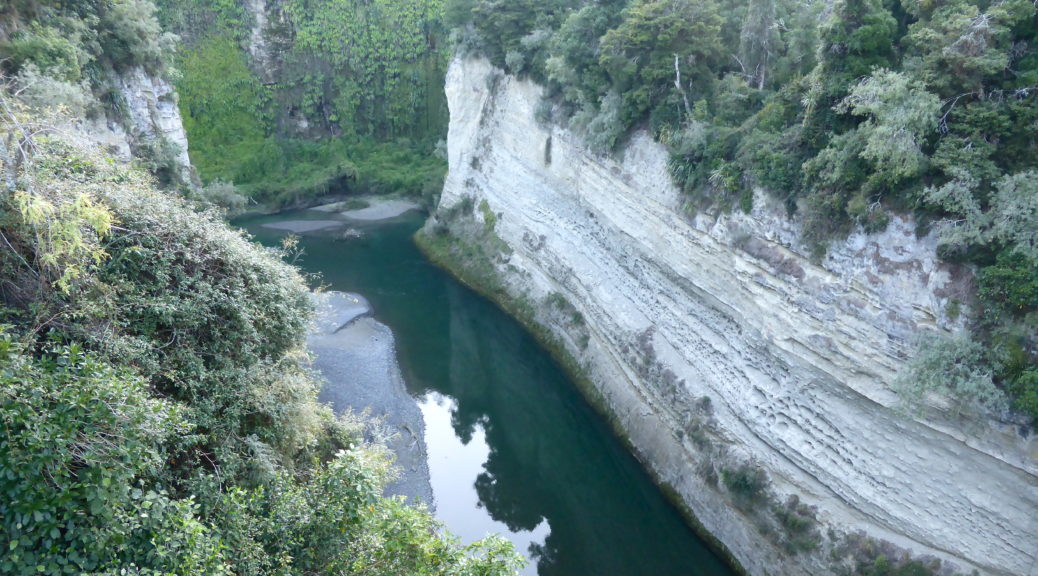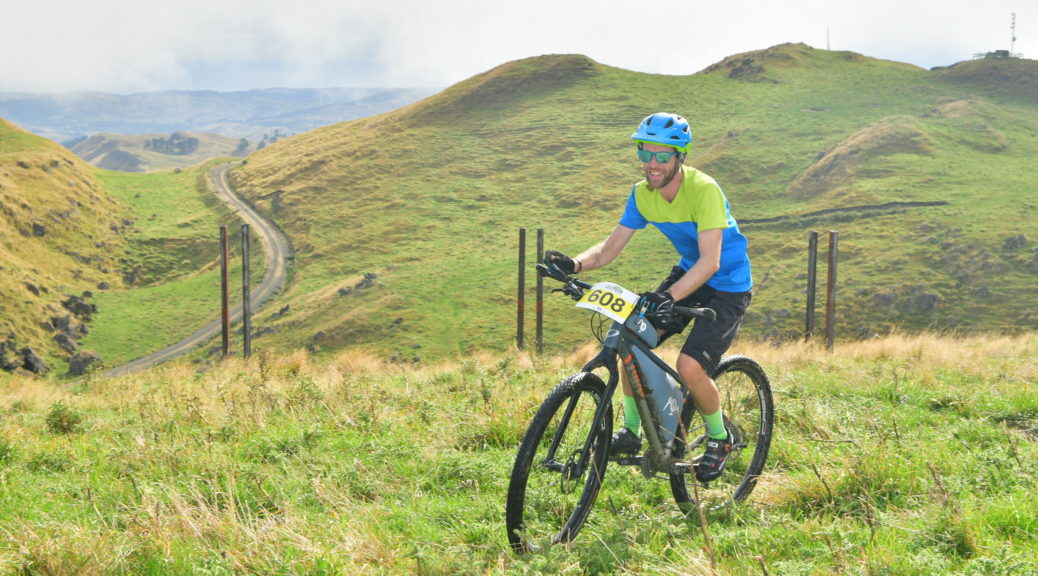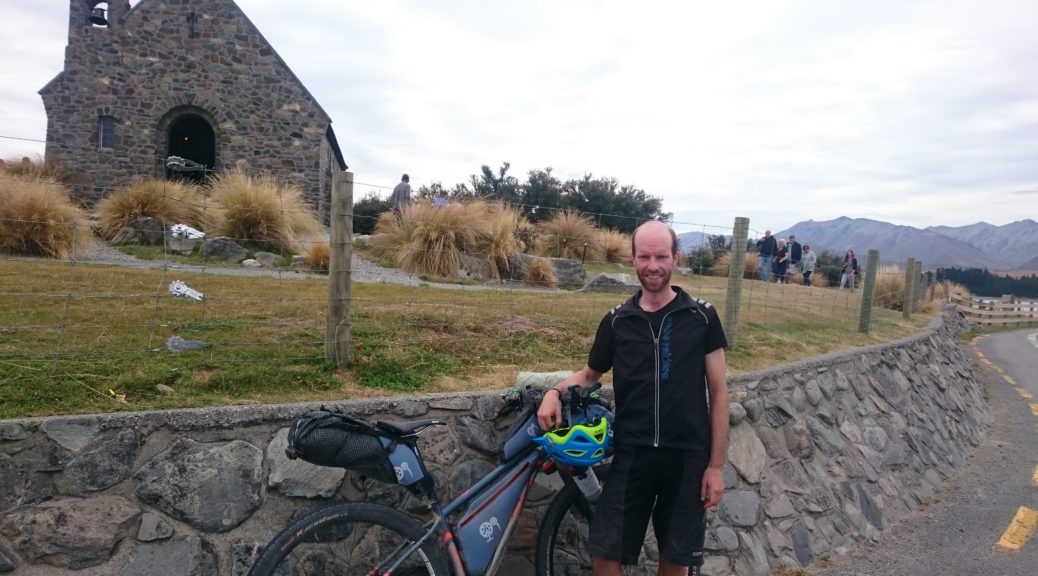For most of the last fifteen years, I’ve been somewhat in awe of anyone that can run a marathon. To me, it seemed an improbably long distance to run. Despite this, there always lurked at the back of my mind the question “could I run a marathon, do I have one in me?”. My detestation of running and never having run more than five kilometres did nothing to quieten these ponderings.
Life continued with only occasional musings about marathons flashing through my mind. Then a strange happened, after losing a bit of weight and hearing running might be good cross-training for my bikepacking, I decided to see if I could actually run a bit. Park Run, which I knew all about from when I was in England, seemed a low-key and supportive way to give running a whirl. Early last year, I rolled up to the local event and to my surprise was actually able to run five kilometres without collapsing or hurting my knees. Hoo-rah!
Intermittent Park Running saw my times improve through last year, and only the occasional slight injury. Twice I even got dragged around by others for ten kilometre runs! Madness; although I must admit it’s far easier to travel with running shoes than a bike.
With such a base, why not find out the answer to those recurring questions? So rather quietly, I signed up to the local marathon (no travel costs, easy reconnaissance, familiar terrain and, most importantly, dead flat), found a training plan and support online and got into it. Would it be possible for this cycling adapted body to go from 10 km to a marathon in less than a hundred days? I was keen to find out. Four hours was the nominal target finish time, but mostly it was about making it to the end.
It was pretty easy to get into the training plan. Each week two short runs and a progressively longer run were interspersed with flexibility and strengthening exercises. It took a lot of time to stick to the program – and much more discipline than I’m used to for my biking (after all, it’s not hard to get out and ride when it’s so enjoyable). For some reason, I was keen to keep my marathon ambitions quiet – mostly because I wanted to see if I could do it independently and didn’t want to get distracted with all sorts of good advice.
Training managed to not get sidetracked by long rides (focusing on running and not going riding was perhaps the most difficult part) for the first couple of months. But then a stunning Easter weekend came around, and I couldn’t forgo four days of bikepacking. I had a grand weekend biking, but with that, a busy weekend following and then getting a cold – I missed the two longest runs in the plan. Oops.
By then it was time to start easing up before marathon day. I did at least not overdo it and went in well rested. The big weekend rolled around with an air of inevitability. I had no doubts that I’d finish. My best run in training was 27 km at a comfortable pace – so I was confident I’d get through the first 30 km OK, and then just suffer through the last 12 km. Not a great plan, but I didn’t really know how my body would react after the 30 km mark.
After some ordinary autumnal weather, race day dawned clear and cold. Possibly the coldest morning we’ve had so far this year. A slightly larger breakfast than normal went down and I still had plenty of time to walk to the start line, stretch a little and assemble in the start pen and wait for the gun.
Following a quick wave to friends spotted in centre of the runners, the gun went off and a mass of nerves and limbs took off around the corner. Through Ahuriri and past the Port of Napier, this was all familiar running surroundings. But the throng of other runners and being on the road was unusual. I was trying to keep to five minute kilometres, but expected to go out a little fast. Once the crowd thinned a little, I started a four hour history podcast going and settled into a slower pace listening to an account of the final throes of the Great War.
On such a glorious morning, there were plenty of supporters out cheering people on. It was especially odd to be running down Marine Parade. Through some back streets, we were soon out into more rural areas – it sure had been easier biking the course. I’d mentally prepared myself for the six kilometre stretch of stopbank to Pakowhai; this part of the course wasn’t particularly interesting or scenic, but did at least pass the halfway point.
The road back to Clive saw me start to slow noticeably; there was a large contingent of supporters on the way out of Clive (about the 30 km mark) – so that was encouraging. It was nice to be out in the sun, with little wind and trying to imagine all the local scenes as a visitor would see them – this particular event seems to have become a destination race and is heavily promoted (or vice versa, perhaps). My feet started to swell a little, I should have stopped and loosened my laces – but didn’t for some reason.
Getting pretty sore on my feet, after 35 km short stretches of walking eventuated – while slow, they did at least keep me moving towards the finish line. My running was probably pretty ugly by then (there are definitely no good event photos that are worth paying for!), and plenty of people passed me. At Black Bridge, the shorter courses joined and there was only a few kilometres to go! Those still on the half- and 10 km courses were not much faster than me, so that wasn’t too discouraging.
Over the last little bridge and down into Haumoana, I managed to run the last two kilometres. After the good atmosphere and support previously, running through this stretch was disappointing and anti-climatic. There were people wandering every which way, many on the course and it was difficult to weave through them in my tired state. Just as my podcast was winding up, my phone started ringing in my ears – apparently the builders replacing my house’s roof had struck a plumbing emergency with water gushing all over! Leaving them to deal with it as best they could (it worked out fine, and didn’t cost too much) I turned into the finishing chute at Elephant Hill. Still not completely sure how I managed to take a phone call while running to the finish of a marathon – surreal.
I think I managed to at least run over the finish, collect my medal and a lot of fluid. Pretty happy to finish, and at 3:53:14, well within my vague goal. I went and found a nice patch of shady grass to lie on.
So it turns out I did have a marathon in me somewhere, at least that question is answered. Pleasing to find that out and satisfying having put in a concerted effort over the previous months. Now I’ve done one, I’m sure there is a lot of time to be shaved off – but really I’d rather get back to riding my bike more, keep Park Run up, and run shorter distances around hills and trails more.

 In the meantime I occasionally looked back over Hawke’s Bay while making my way through the copious amount of food I’d packed for a day with no services.
In the meantime I occasionally looked back over Hawke’s Bay while making my way through the copious amount of food I’d packed for a day with no services. Looking over to the northern reaches of the Ruahine Ranges.
Looking over to the northern reaches of the Ruahine Ranges. Te Manihi (1099 m) – just before dropping down to the popular Kuripapango campground and crossing the headwaters of one of the big Hawke’s Bay rivers, the Ngaruroro.
Te Manihi (1099 m) – just before dropping down to the popular Kuripapango campground and crossing the headwaters of one of the big Hawke’s Bay rivers, the Ngaruroro. It doesn’t look too steep, but this convoy of caravans stopped as they were cooking their brakes.
It doesn’t look too steep, but this convoy of caravans stopped as they were cooking their brakes. Kaikomata Range.
Kaikomata Range. The views of Ruapehu were excellent, I was surprised by how much snow was up there already.
The views of Ruapehu were excellent, I was surprised by how much snow was up there already. The road quickly dropped down to the mighty Rangitikei River. And reared steeply out of the valley, probably the toughest climb all day – it was a bit of a grovel.
The road quickly dropped down to the mighty Rangitikei River. And reared steeply out of the valley, probably the toughest climb all day – it was a bit of a grovel. A nice little climb to warm up deposited me into this colourful scene.
A nice little climb to warm up deposited me into this colourful scene. I soon dropped sharply to cross the Rangitikei again, riding over a deep and narrow gorge.
I soon dropped sharply to cross the Rangitikei again, riding over a deep and narrow gorge. Out of that valley I soon found a sublime patch of gravel winding its way through farms littered with golden trees and dropping into the next valley, the Kawhatau.
Out of that valley I soon found a sublime patch of gravel winding its way through farms littered with golden trees and dropping into the next valley, the Kawhatau. Ruapehu popped up again.
Ruapehu popped up again. Watching and listening to dogs mustering sheep was about the most activity I saw all morning.
Watching and listening to dogs mustering sheep was about the most activity I saw all morning. Native forest! Maybe I’d climbed just a little.
Native forest! Maybe I’d climbed just a little. An Event sign, hmmm, what could be going on?
An Event sign, hmmm, what could be going on? One just has to stop for a sign this long.
One just has to stop for a sign this long.
 There was a camera, so I got back on my bike.
There was a camera, so I got back on my bike. I stopped longer to admire the view, and found the doctor to snap a picture of this close-to-home adventure.
I stopped longer to admire the view, and found the doctor to snap a picture of this close-to-home adventure. Just your average piper and drummer on top of a hill at eight-thirty on a Saturday morning as scores of people rode and ran past.
Just your average piper and drummer on top of a hill at eight-thirty on a Saturday morning as scores of people rode and ran past.  Another camera, time to hold onto mine and get back on the bike.
Another camera, time to hold onto mine and get back on the bike.
 Dawn wasn’t too bad either.
Dawn wasn’t too bad either. It really was a lovely morning, and the wind-gods must have felt sorry for me – there was little to contend with. The road curves left and climbs to the pass on the left of Mt Dalgety.
It really was a lovely morning, and the wind-gods must have felt sorry for me – there was little to contend with. The road curves left and climbs to the pass on the left of Mt Dalgety. It really was a nice day, Mt Cook and the Southern Alps hove into view.
It really was a nice day, Mt Cook and the Southern Alps hove into view. Finally, I reached the pass. Rather unhurried and tired, somehow sixty kilometres and 800 metres of climbing had taken five and a half hours! Never mind, it would be all downhill from here – surely.
Finally, I reached the pass. Rather unhurried and tired, somehow sixty kilometres and 800 metres of climbing had taken five and a half hours! Never mind, it would be all downhill from here – surely. Yes, a long downhill!
Yes, a long downhill!